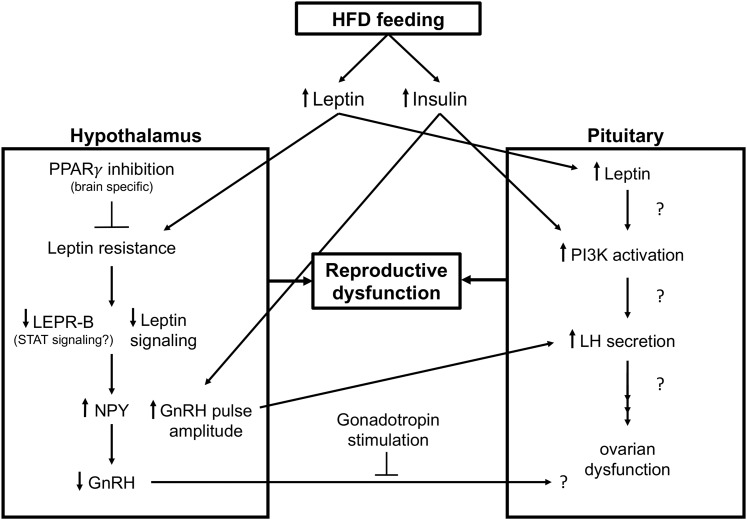Figure 1.
Proposed mechanisms for HFD-induced central reproductive dysfunction. HFD feeding leads to the development of increased leptin and insulin levels systemically. Elevated leptin levels lead to leptin resistance in the hypothalamus, causing decreased leptin signaling and its ability to inhibit NPY, as seen by an increase in NPY, which inhibits GnRH and likely affects pituitary function as addition of gonadotropin stimulus in this model restored fertility. Inhibiting PPARγ’s actions in the brain protects against leptin resistance and reproductive dysfunction. Elevated insulin levels in the hypothalamus increase GnRH pulse amplitude and lead to increased LH secretion from the pituitary. Alterations in hypothalamic function from both increased leptin and insulin signaling contribute to reproductive dysfunction. Increased insulin and likely increased leptin in the pituitary increase PI3K activation, which alters LH levels and contributes to reproductive dysfunction. LEPR-B, leptin receptor type B.

